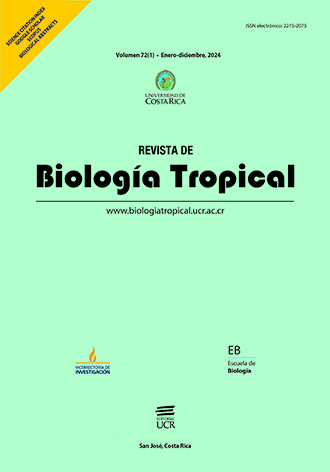Abstract
Introduction: Aquatic birds (AB) are usually associated with wetlands, which provide refuge, food, and/or nesting sites for resident and migratory species. Despite their ecological importance, there is little knowledge on AB in some tropical environments, such as those found on the Colima coast. Objective: To investigate the spatial and temporal composition of the AB community in Juluapan Lagoon, Colima, Central Mexican Pacific. Methods: Monthly counts were conducted between June 2017 and May 2018 during low-tide conditions to record habitat use by AB. Species richness and bird counts were obtained to compare sampling areas; mean richness and number of individuals were compared between seasons. Results: We detected 53 species and 5 750 individuals. The highest species richness and relative abundance values were obtained in winter at the lagoon area farthest from the connection with the marine system, where anthropogenic activity is lower. Diversity was greater in zones 2 and 3 in spring, summer, and fall. Muddy flats were the most used environment, and the most frequent activity was resting. Nesting activity was only recorded in the middle of the lagoon at the mangrove during spring. Shorebirds and waders were the most dominant groups in the bird community of the Juluapan lagoon. Conclusions: This coastal wetland is a site of great biological importance for aquatic birds; thus, conservation measures should be implemented, and there should be a continuous study of the effects of anthropogenic pressure.
##plugins.facebook.comentarios##

This work is licensed under a Creative Commons Attribution 4.0 International License.
Copyright (c) 2024 Revista de Biología Tropical


